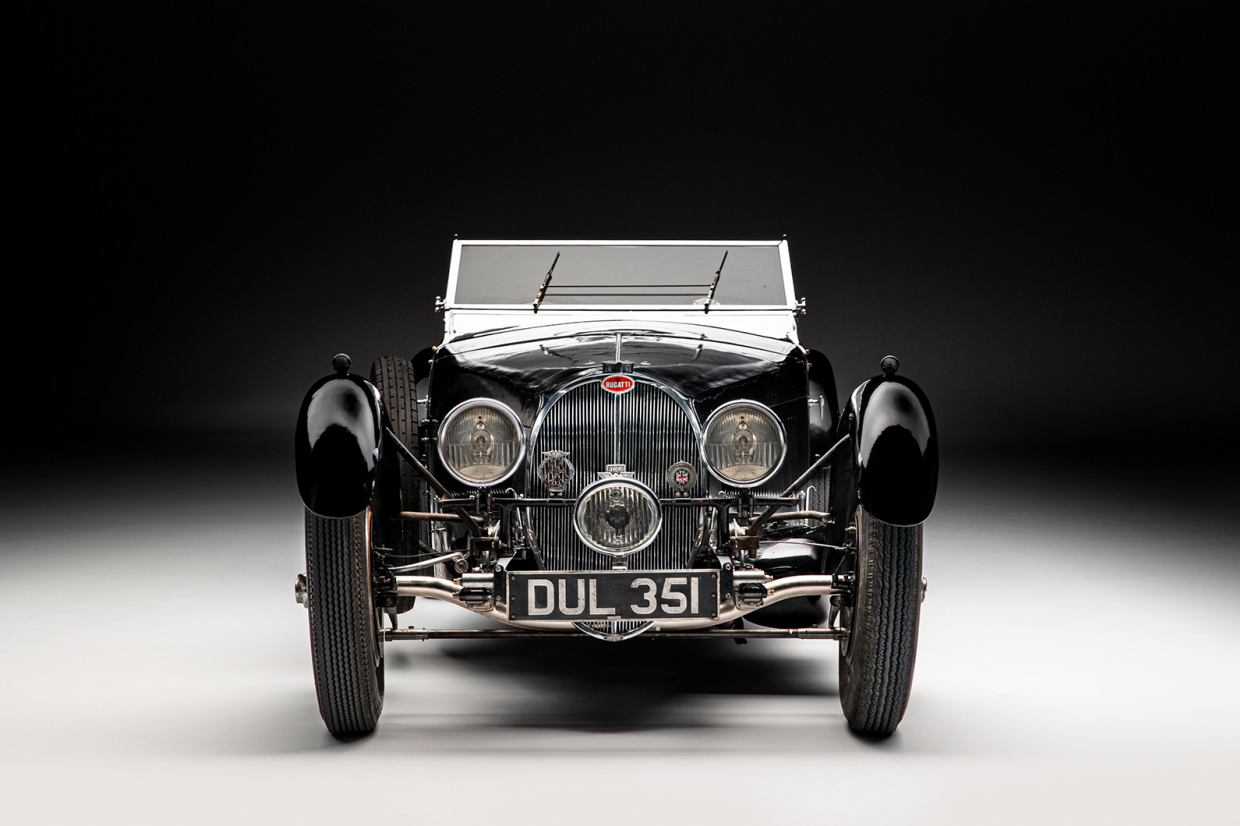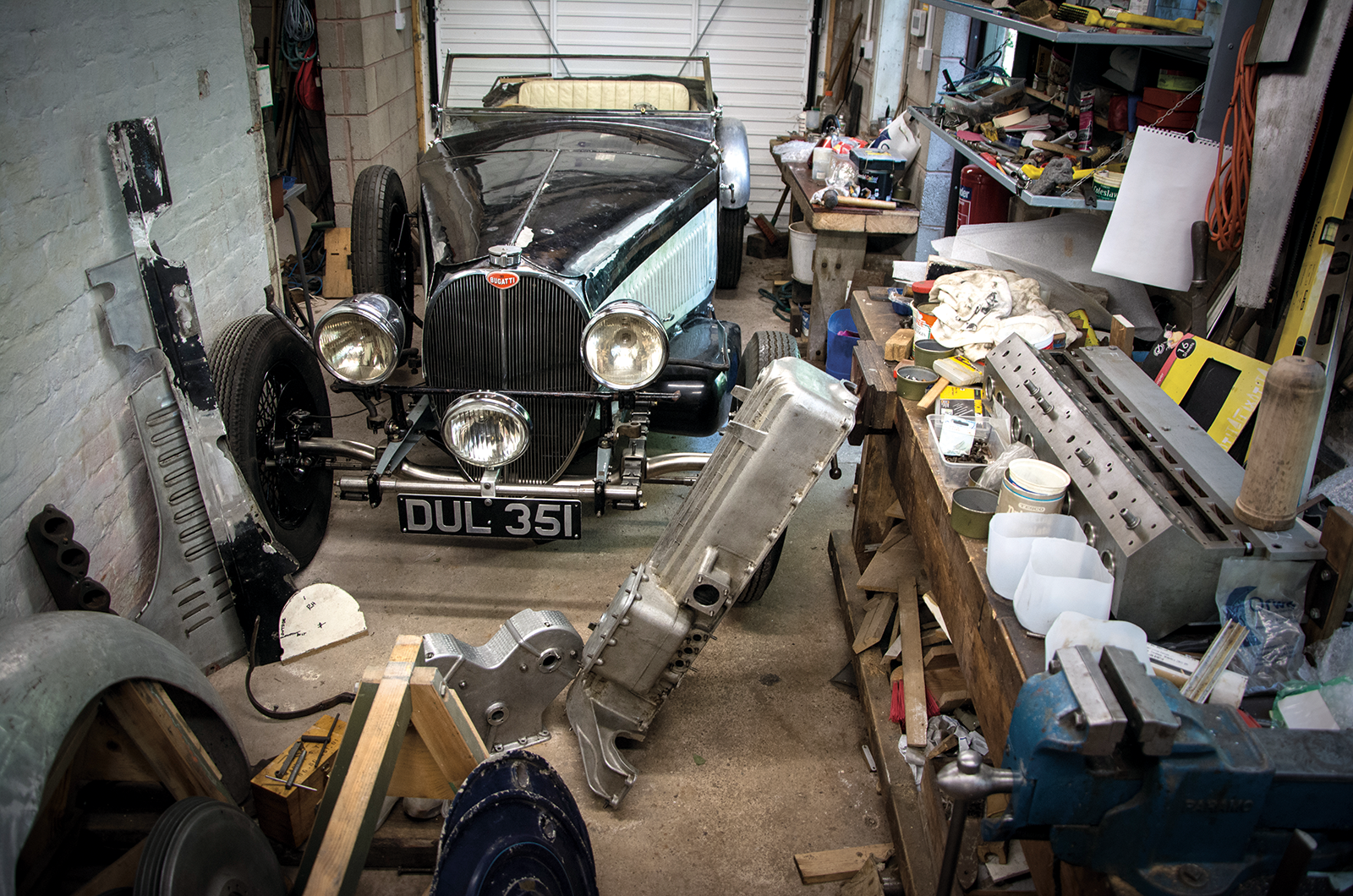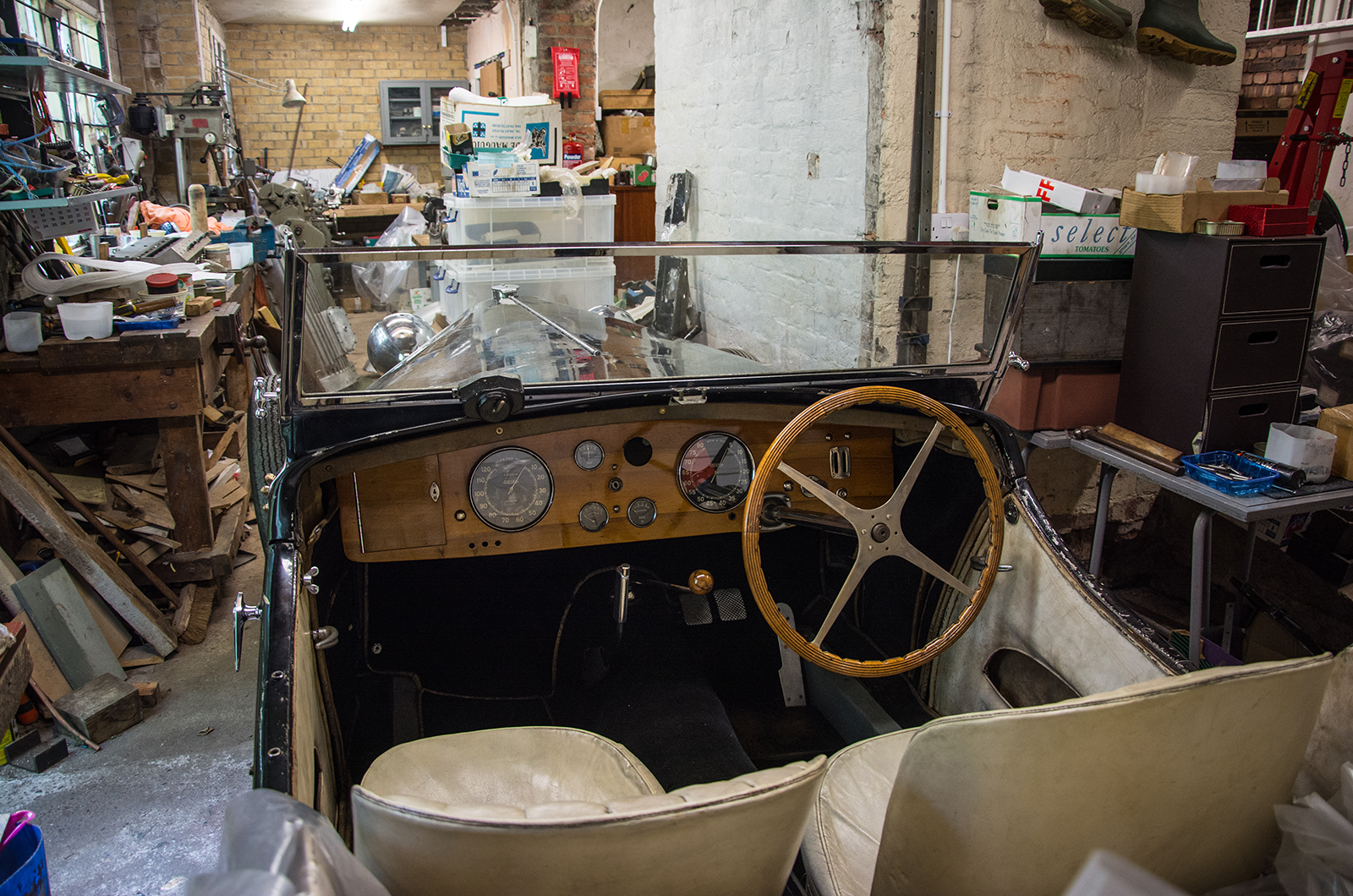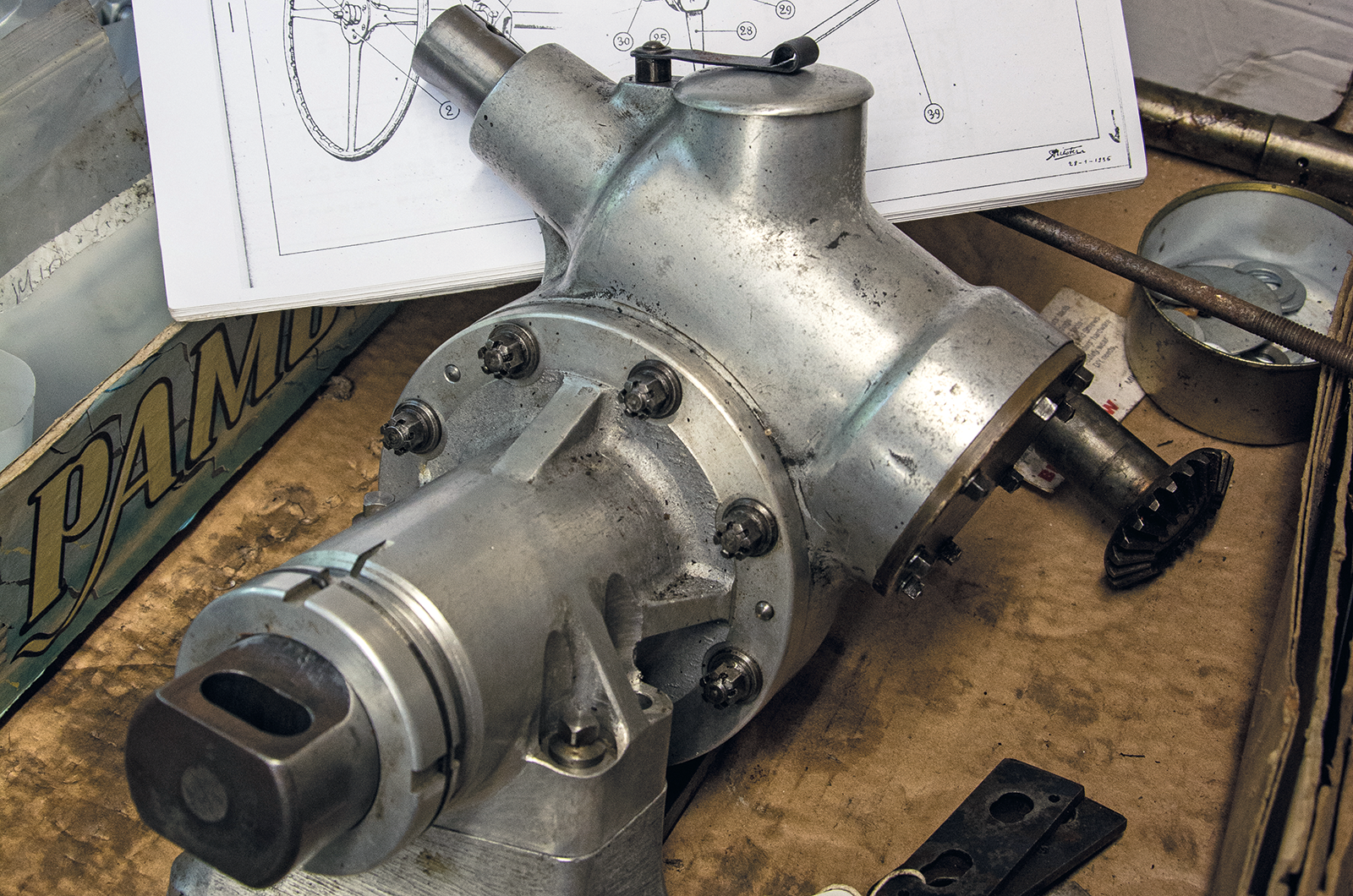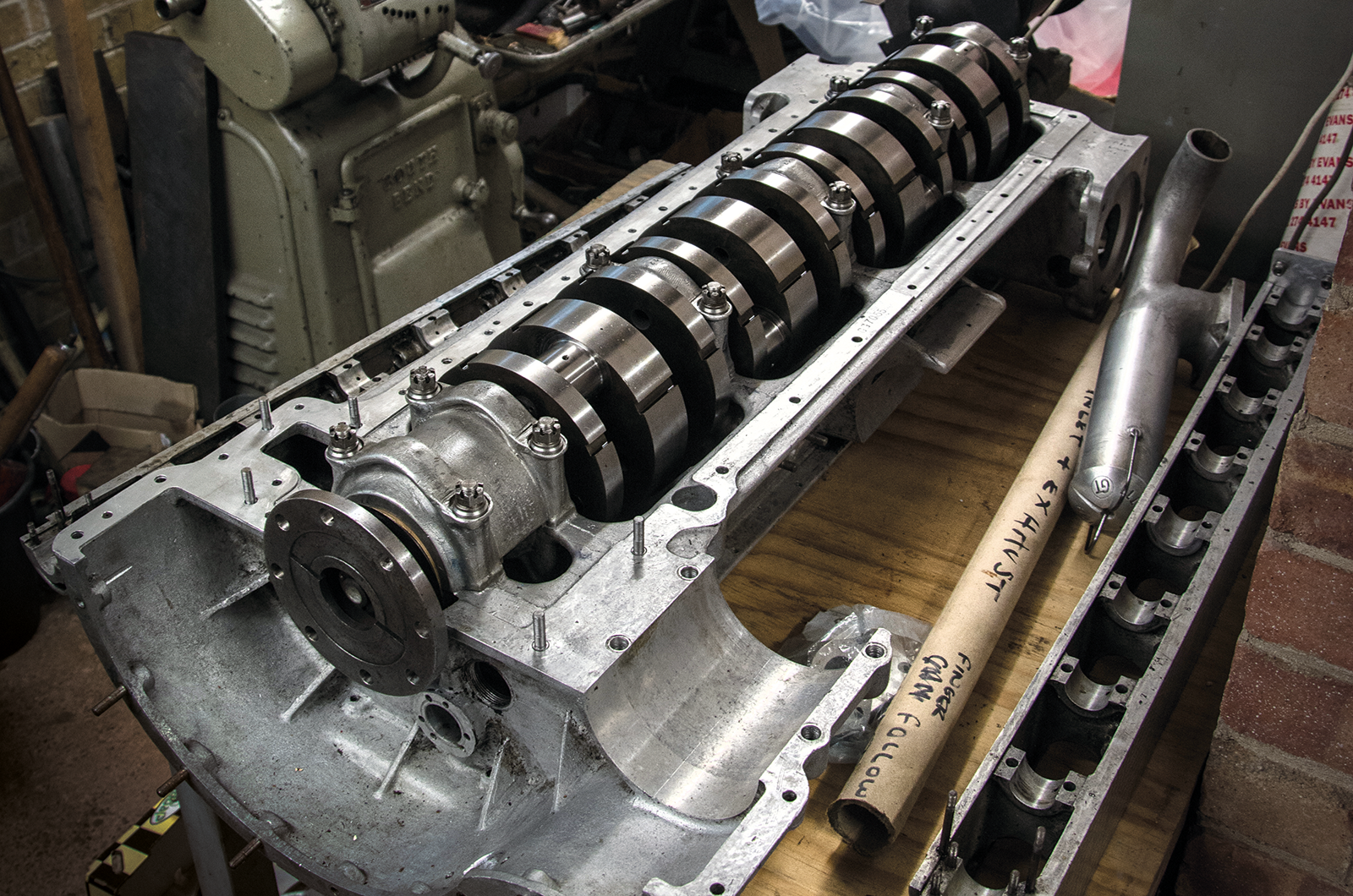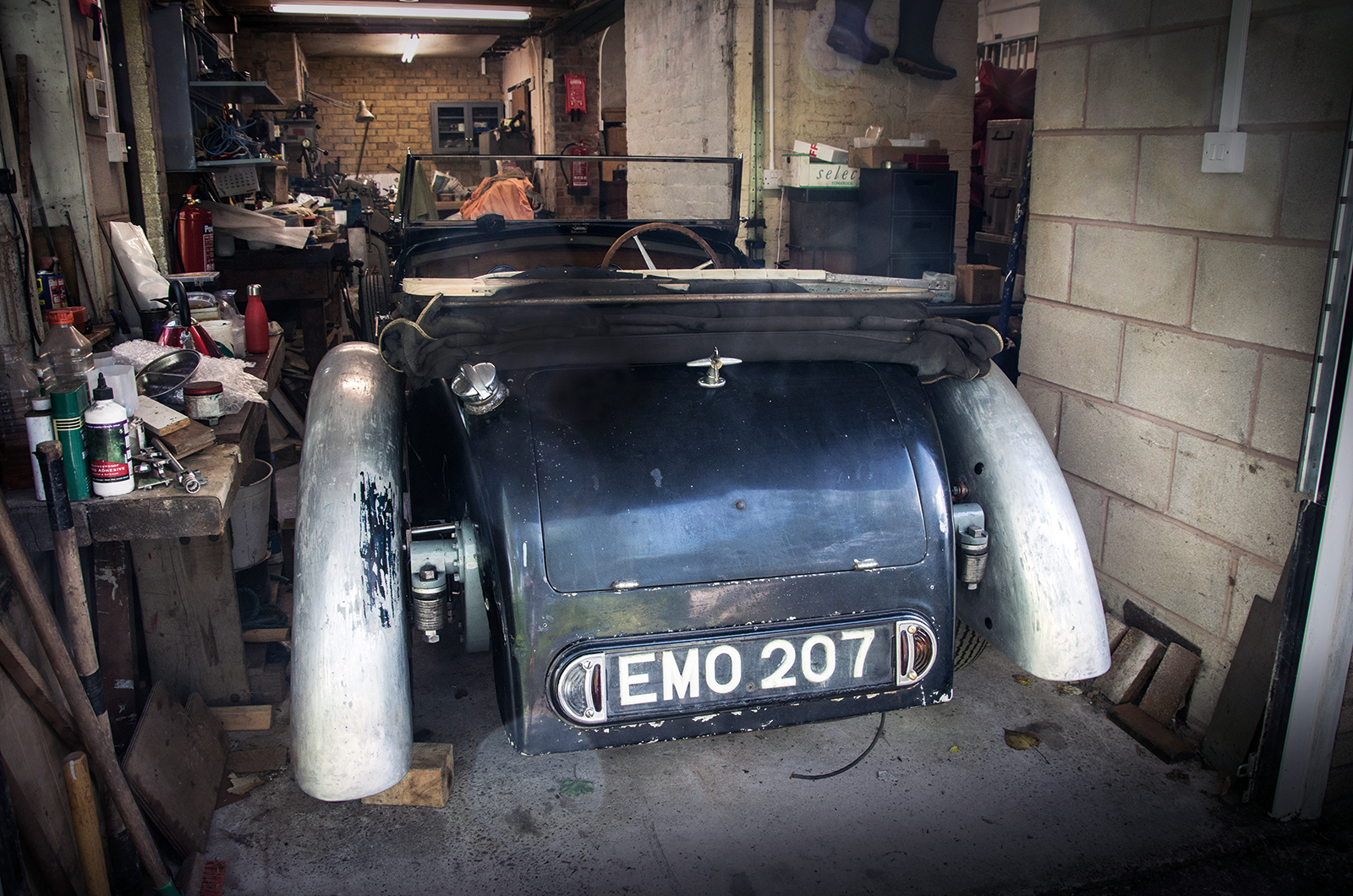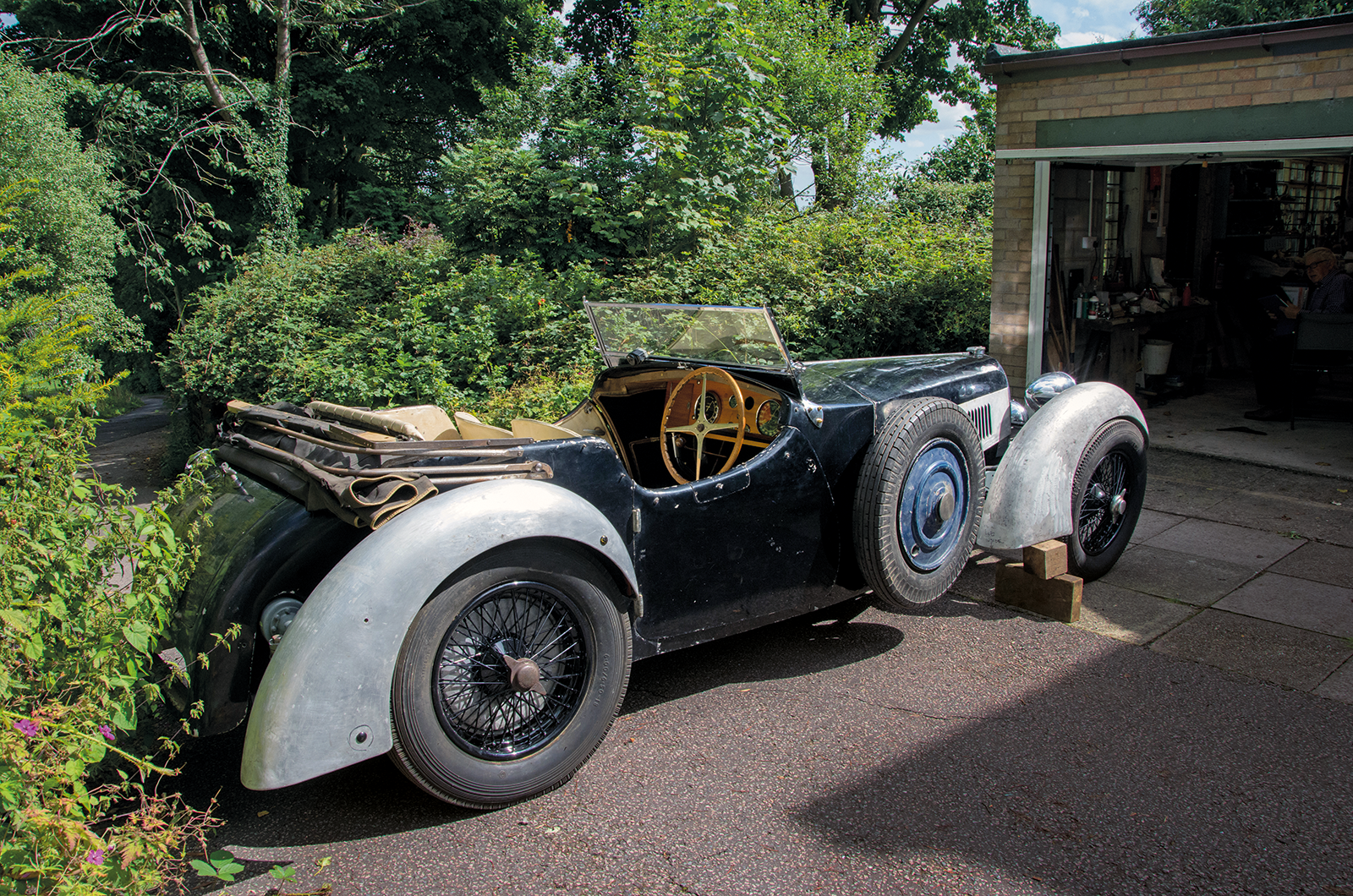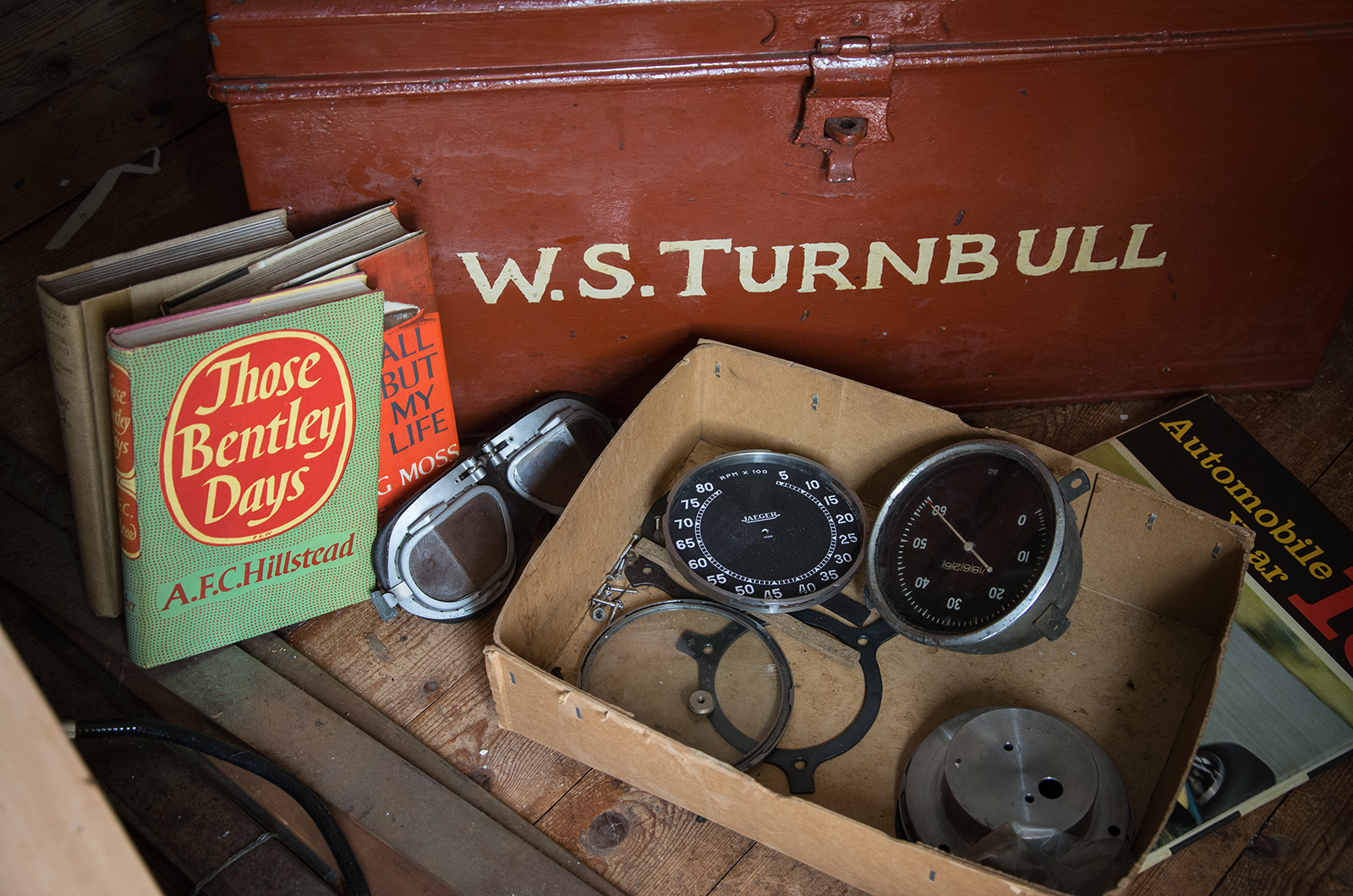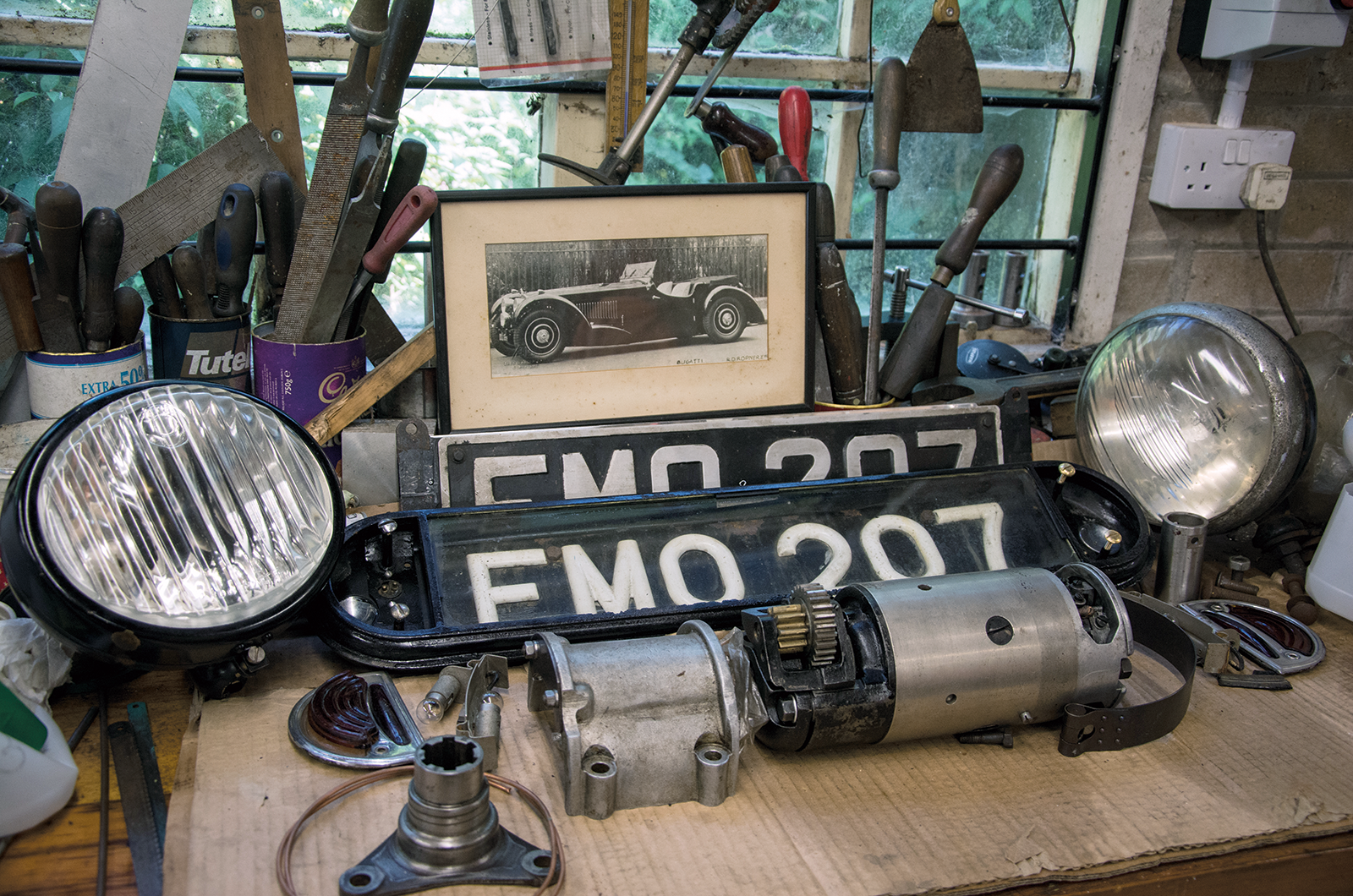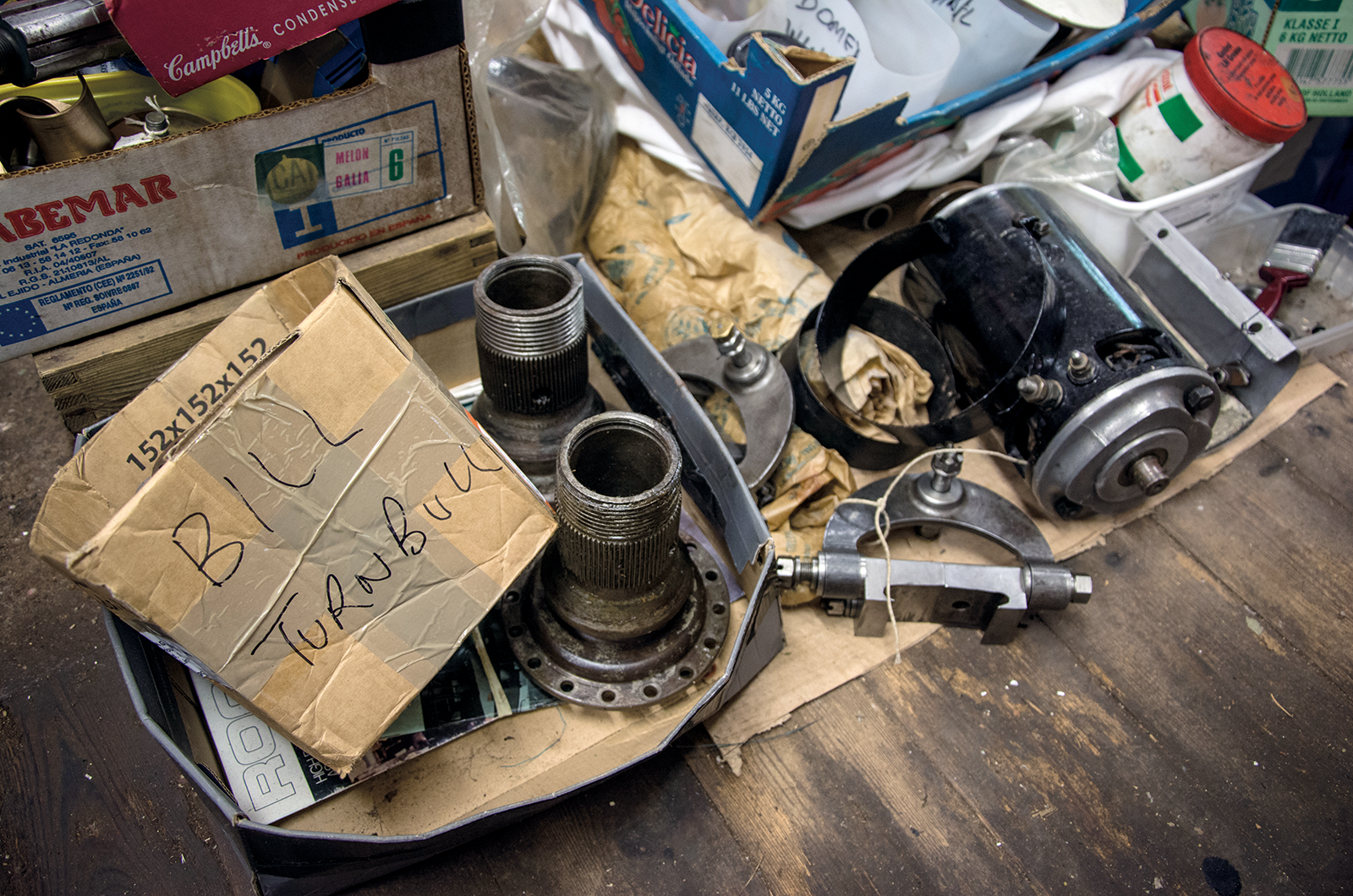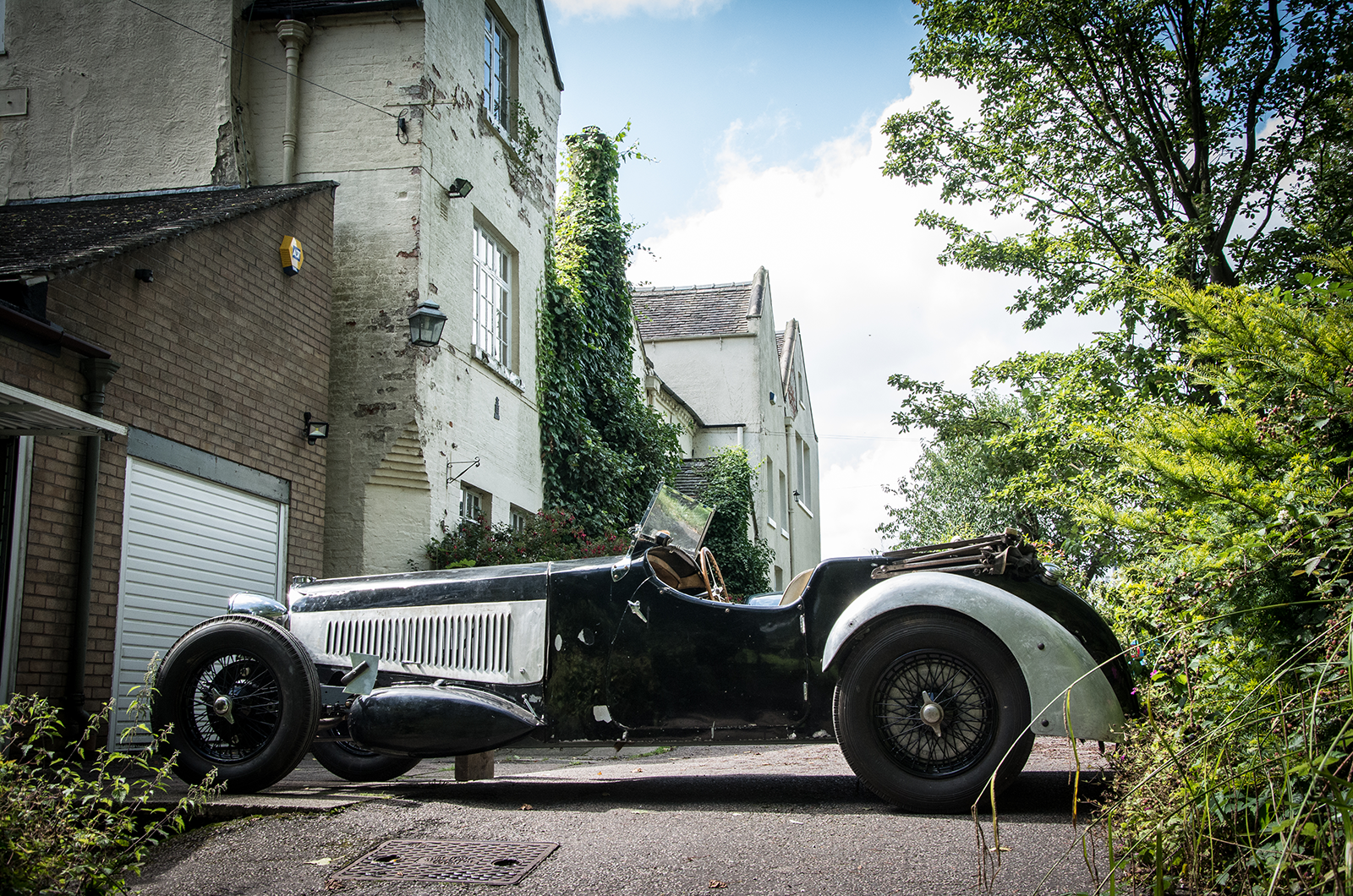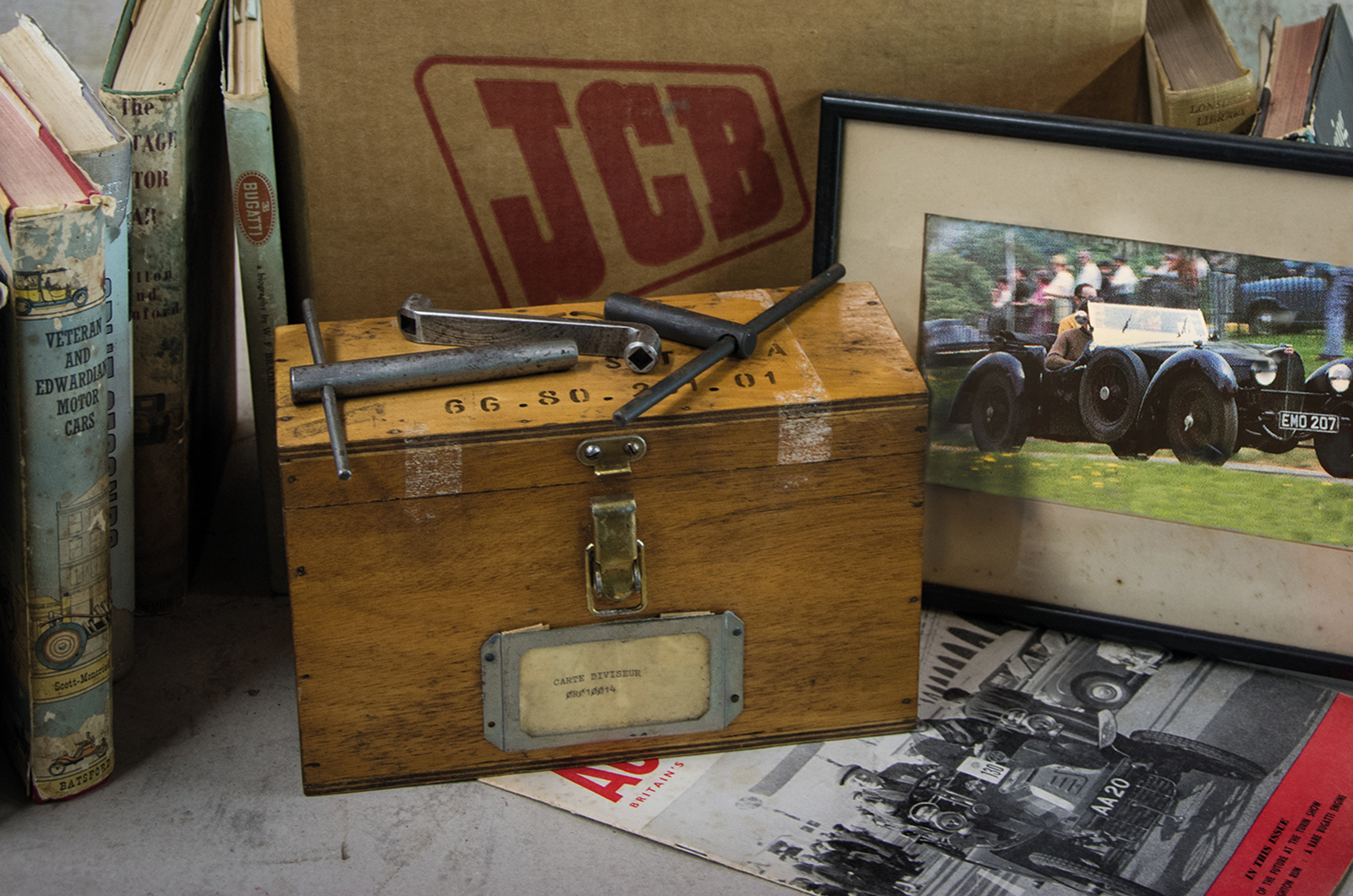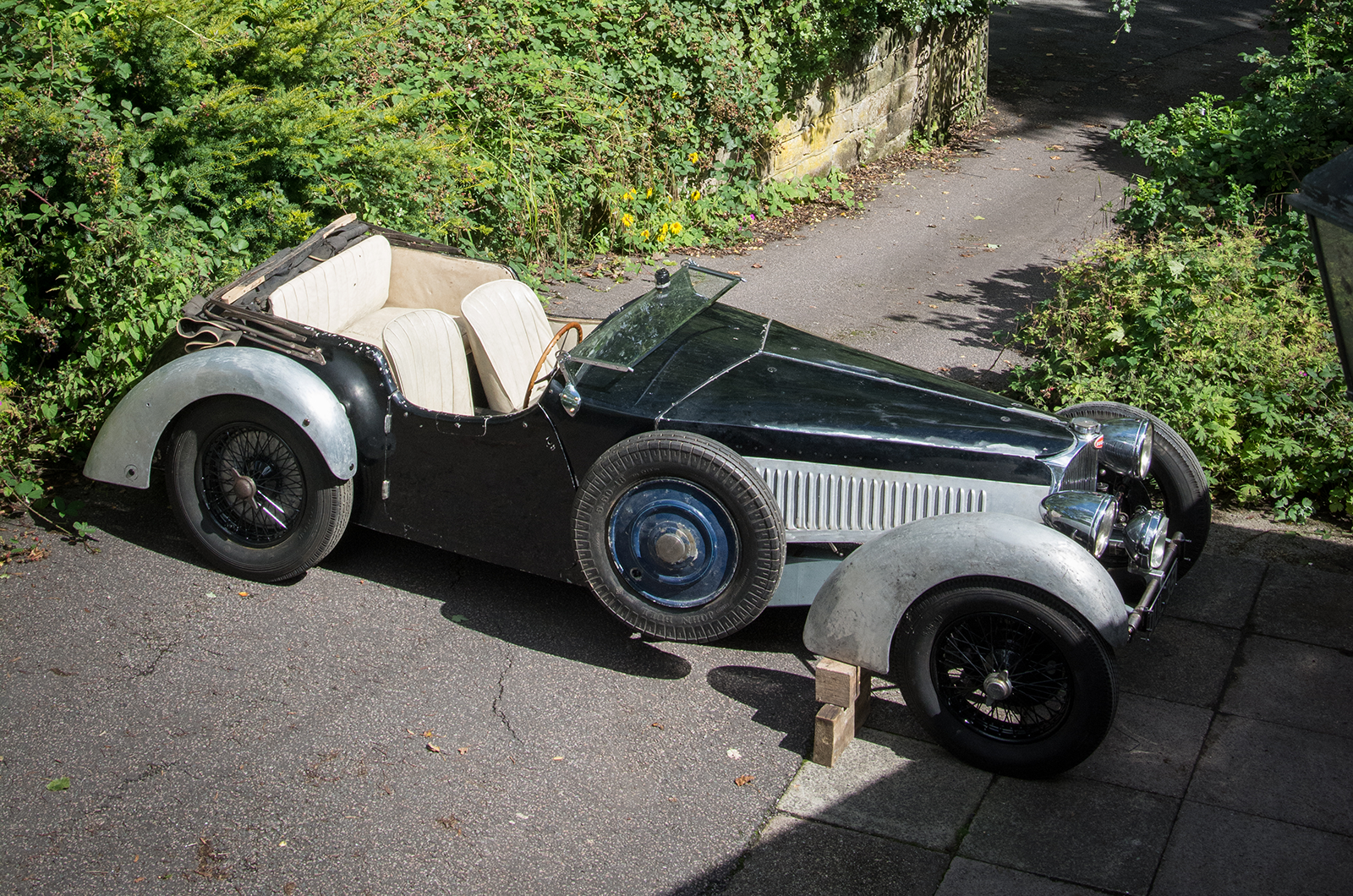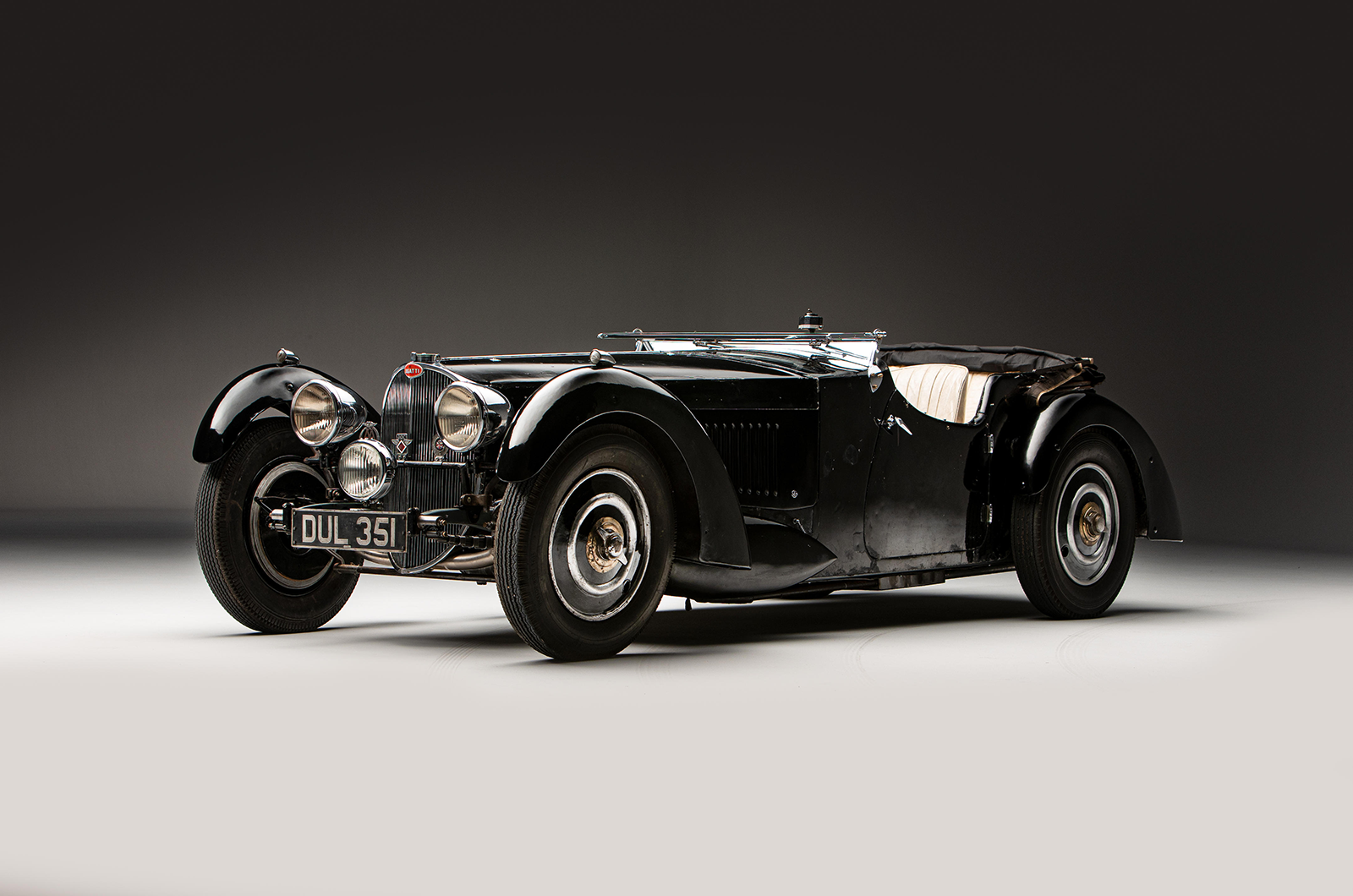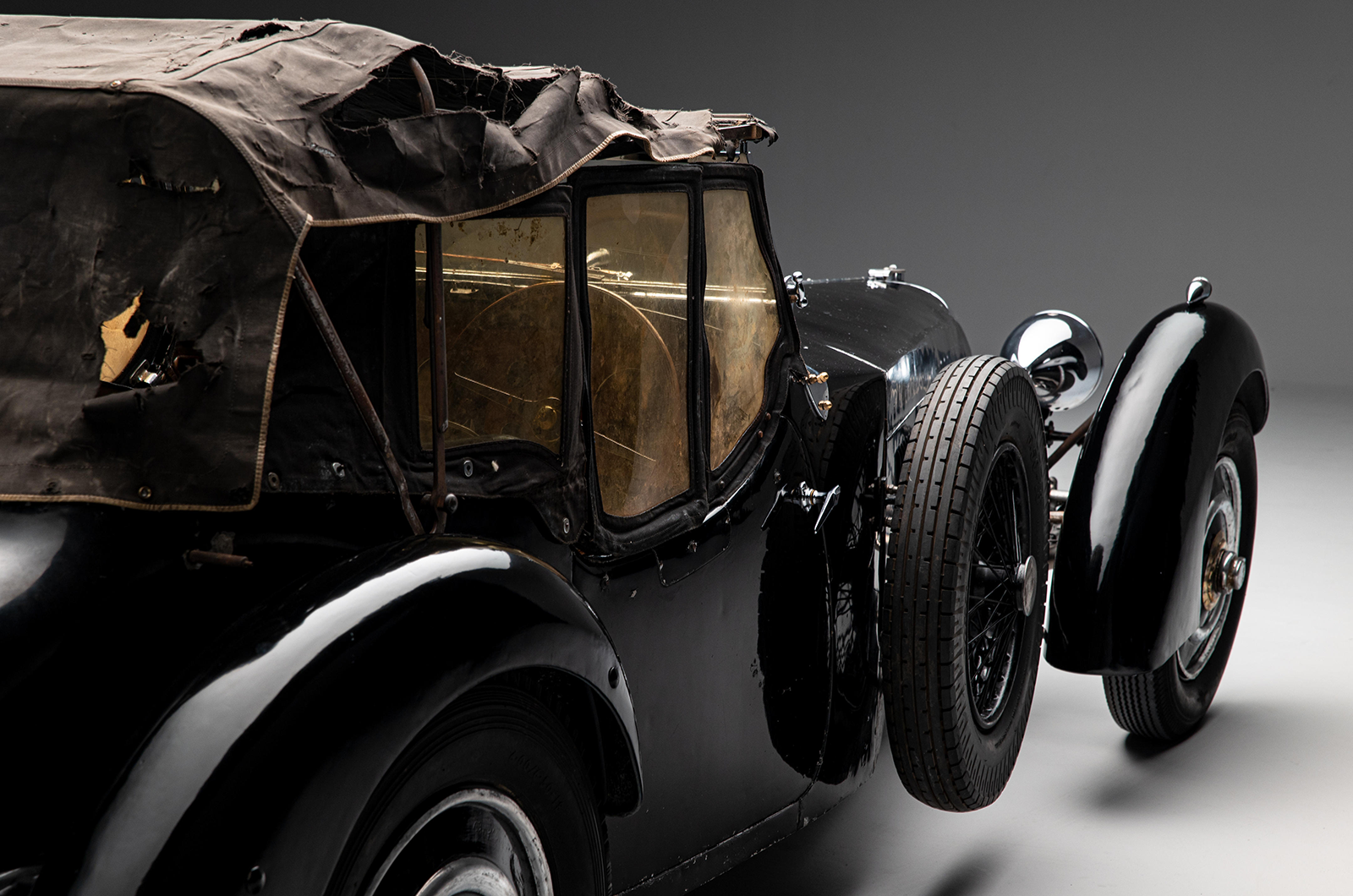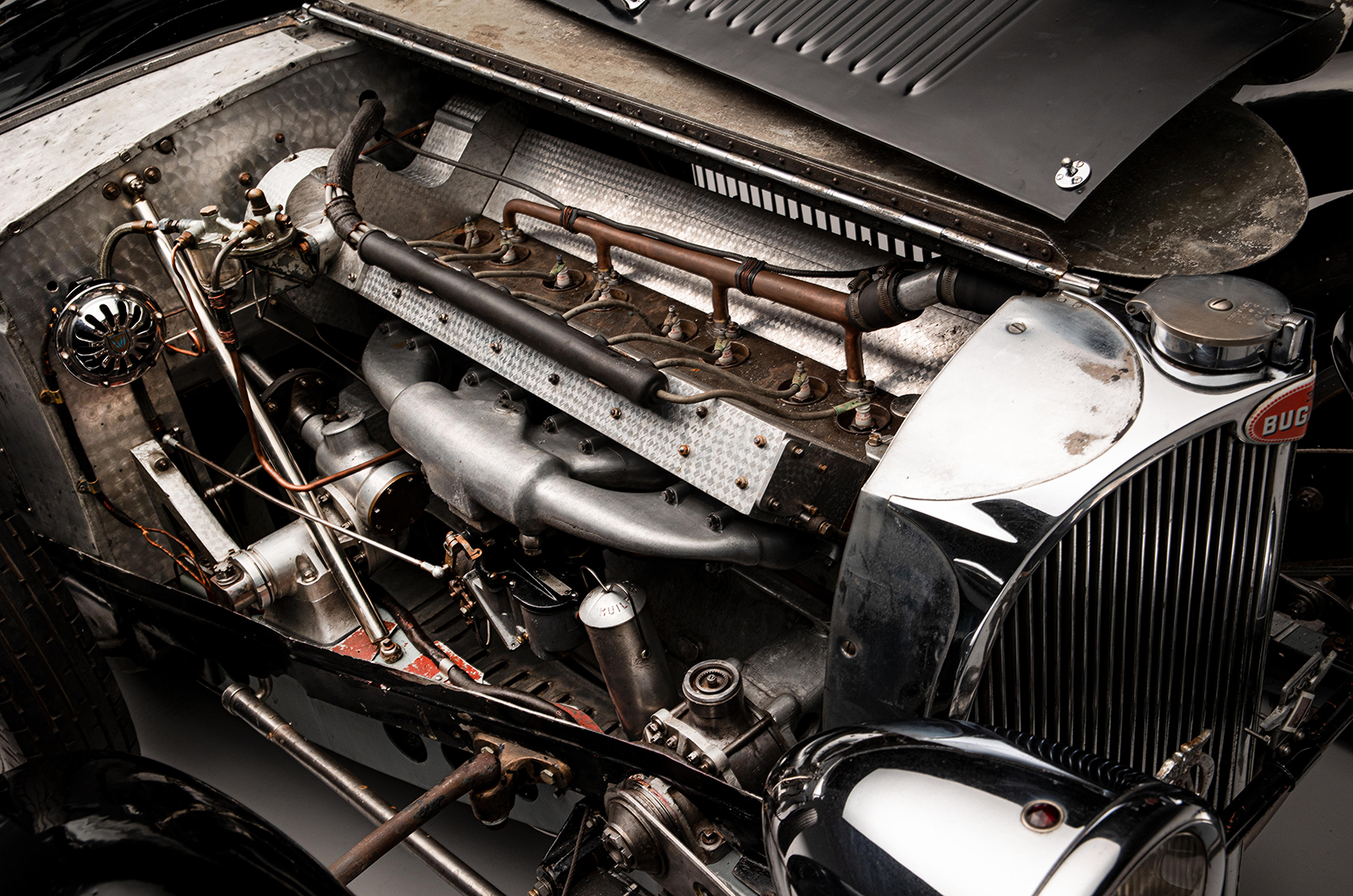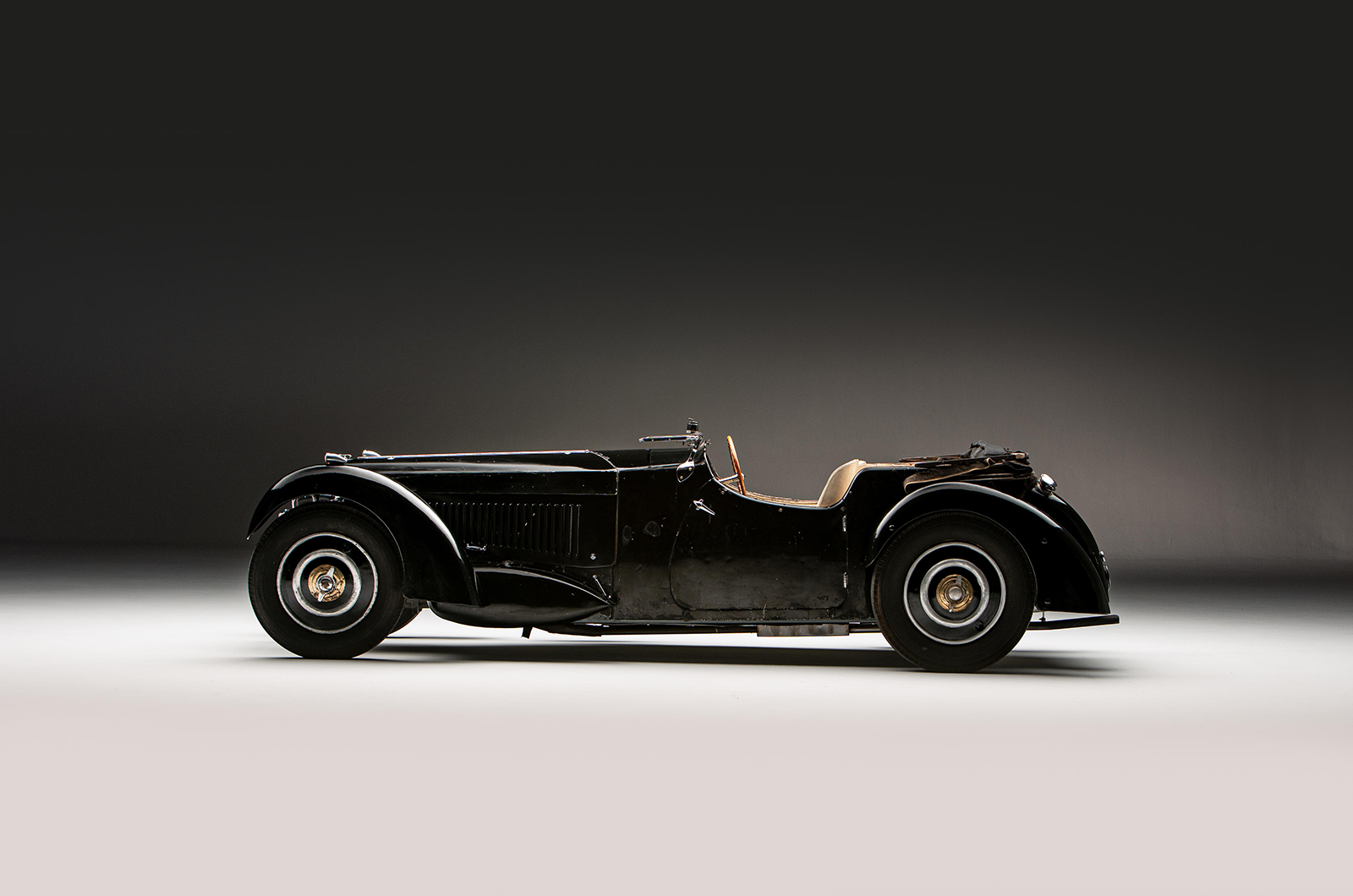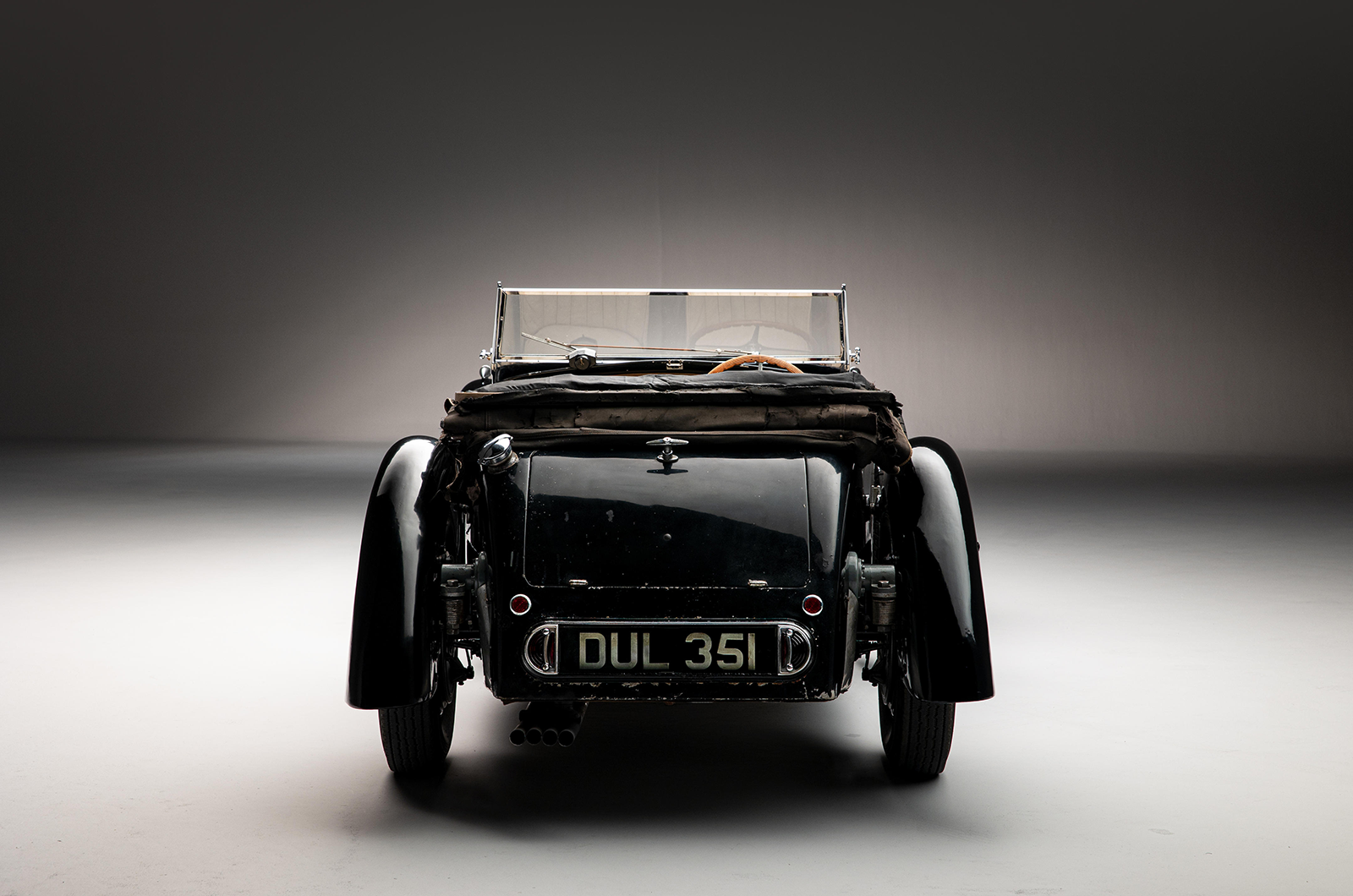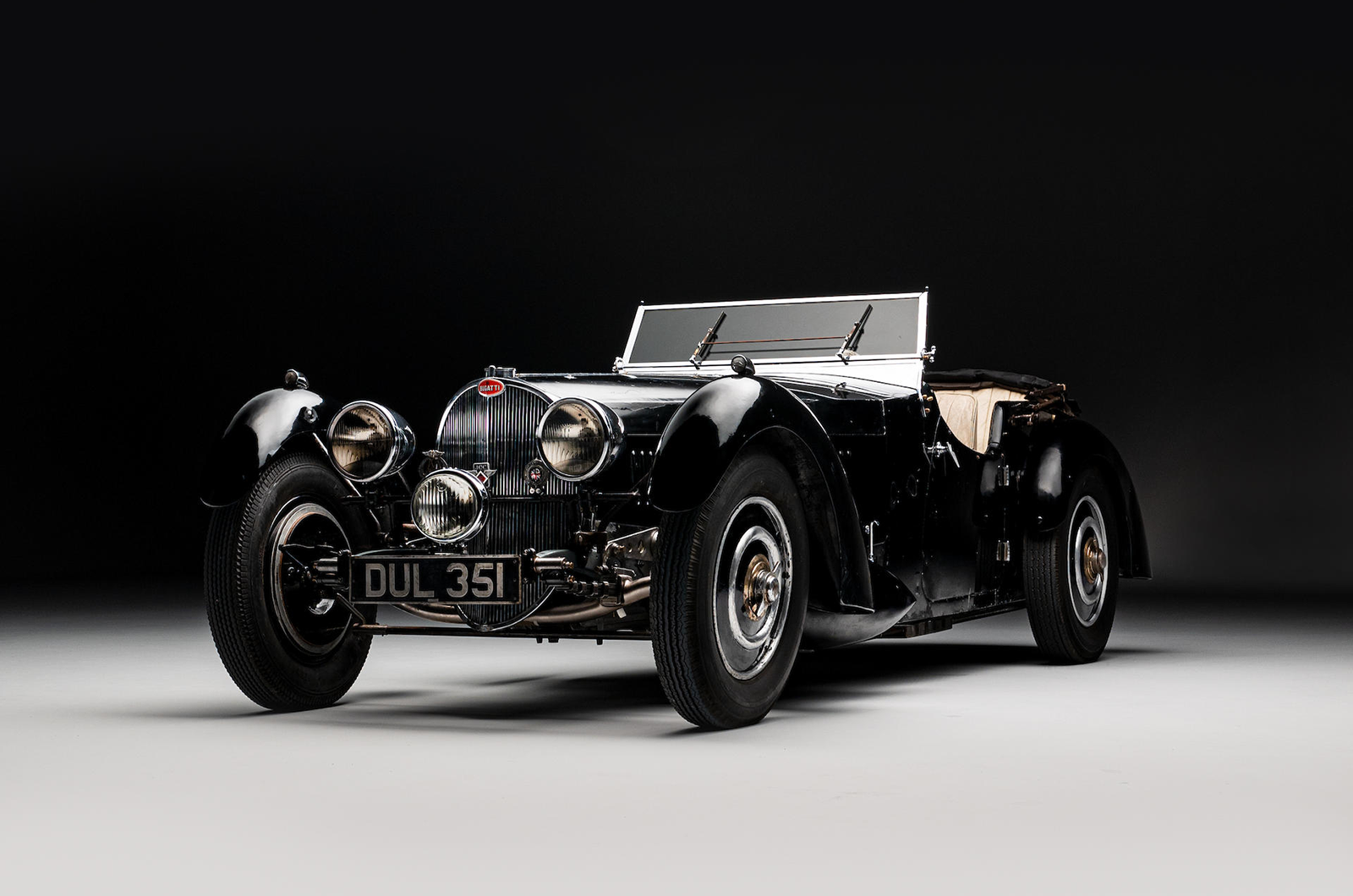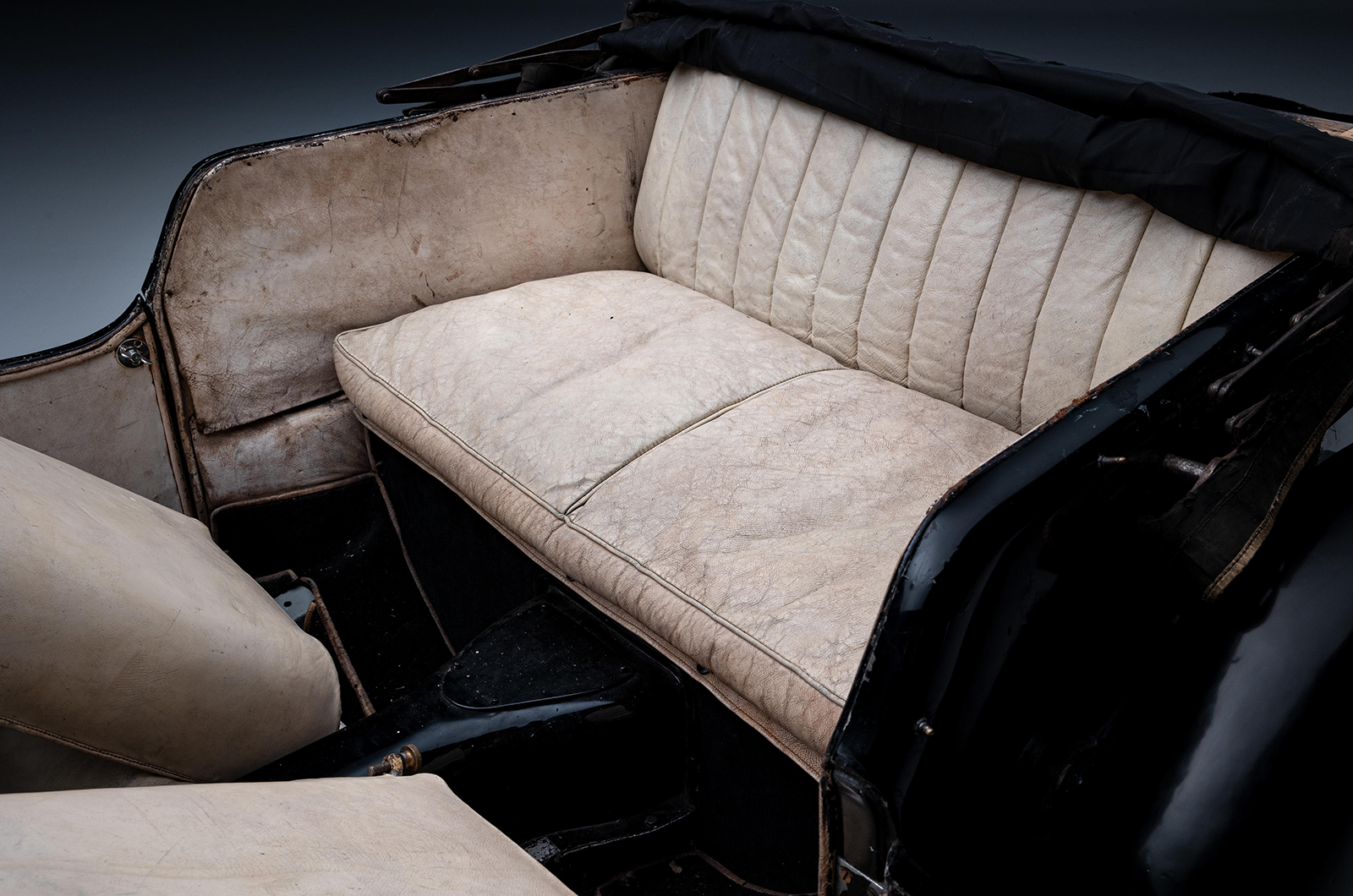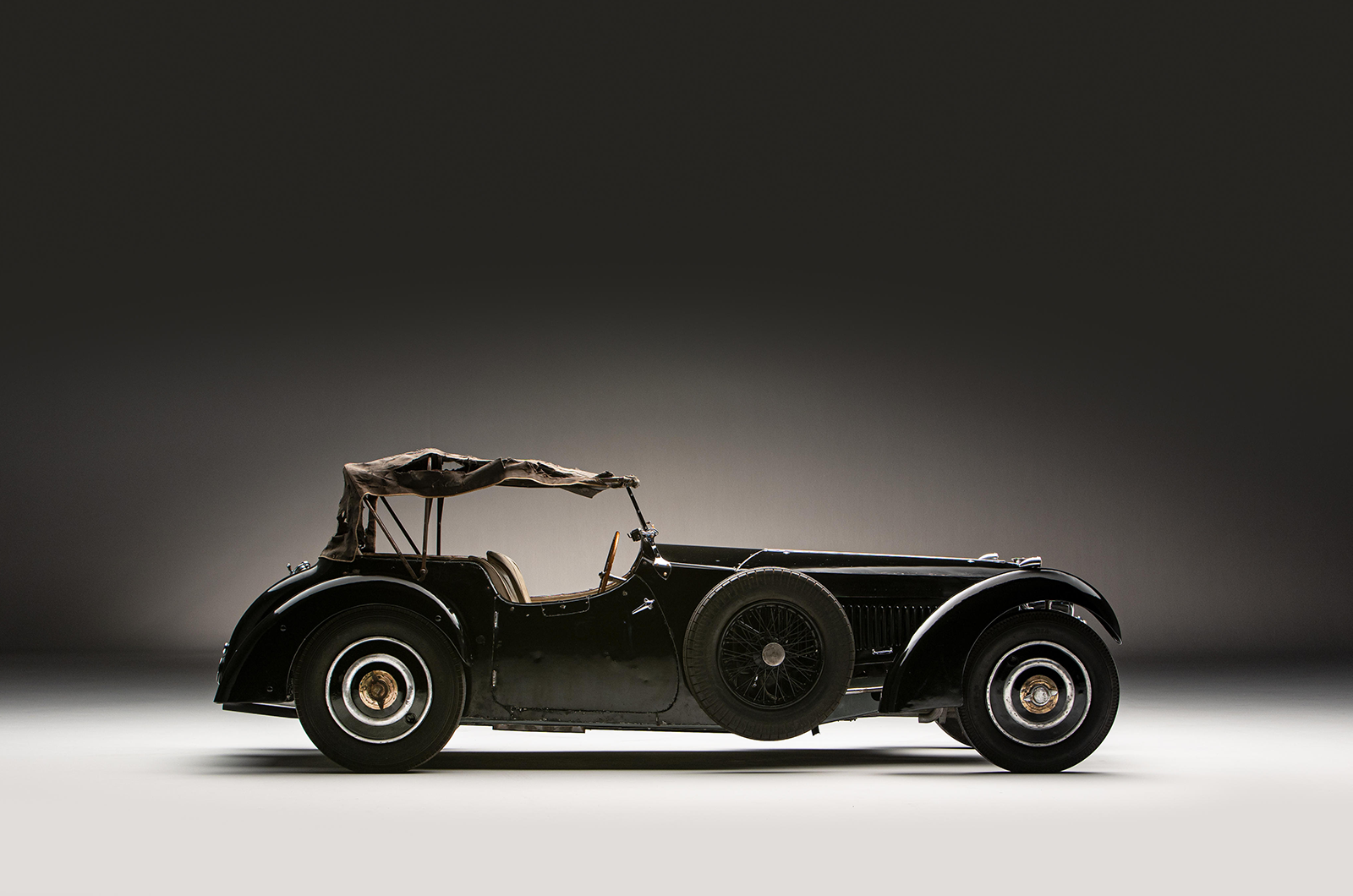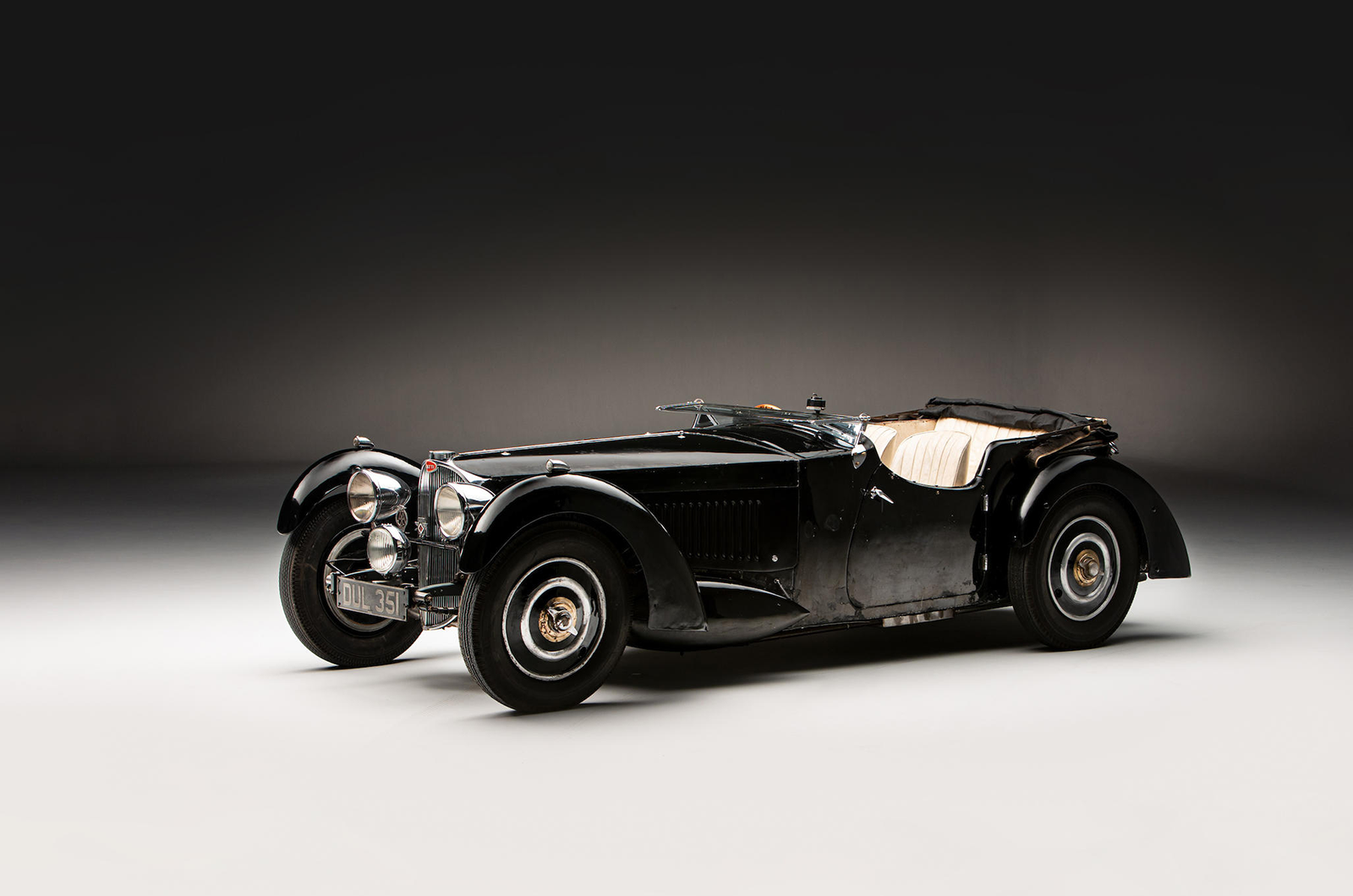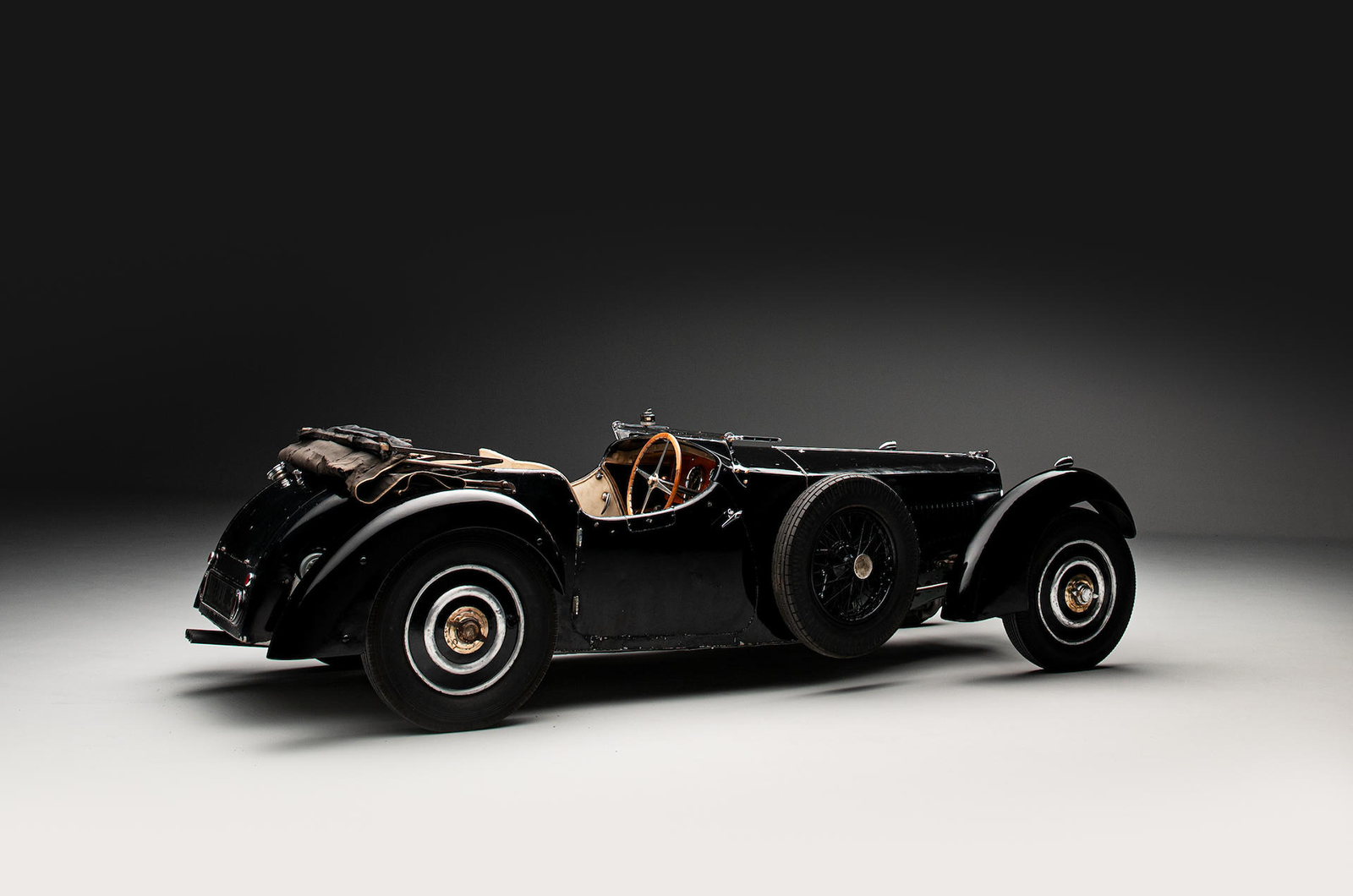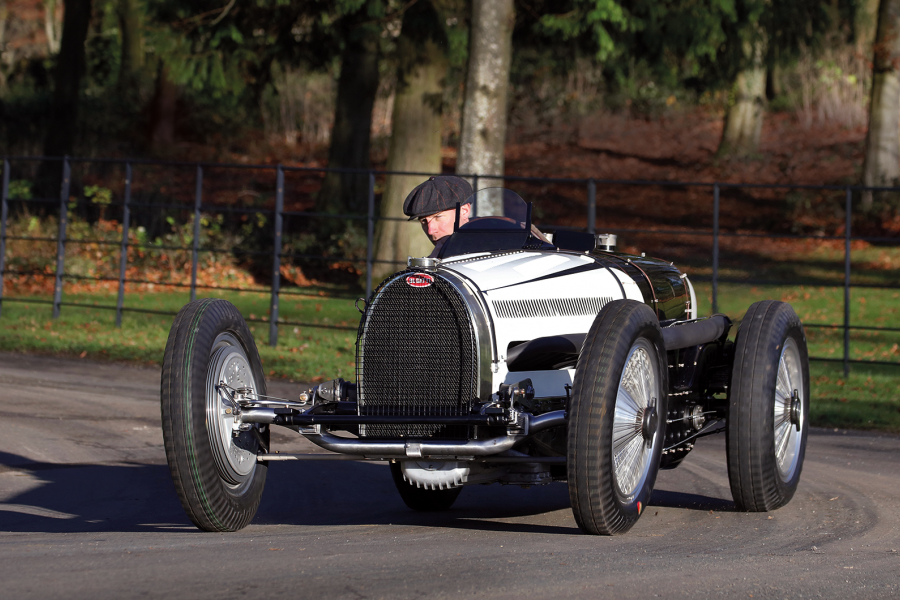“I remember we had to back off because a truck was coming the other way but I was thrilled by the performance. I had to wait another 10 years before I went that fast again. My father had one of the first XK120s and took me for a drive up the Great North Road, where he was determined to reach its top speed.”
No doubt those experiences gave Bruce a taste for speed that became a lifelong pursuit on ice tracks, twice becoming British bobsleigh champion and still making runs in his 80s.
This Bugatti’s last keeper passed away in 2019, before he could complete the restoration
Fearing the Bugatti might be damaged during London bombings, Ropner put the car into storage near Leatherhead, where it would remain locked up until 1945.
Although still one of the fastest cars in England, the eight-year-old open four-seater had clearly lost some of its appeal for the Royal Artillery captain, and with peacetime he indulged in Bristols and the Jaguar.
Ropner never lost his enthusiasm for high-performance machinery, later owning a D-type, Aston Martin DB3S and semi-Lightweight E-type (C&SC, September 2018).
The Bugatti’s straight-eight, engine number 16S
In 1945 the Bugatti was sold to Rodney Clark, who after being invalided out of the RAF had started dealing in secondhand Bugattis at Continental Cars near the village of Send on the A3, where he later founded Connaught.
Clark recalled that the Type 57S was a challenge to disinter from its storage because it hadn’t been used during the war.
Smitten by the Corsica styling and its performance potential, Clark stripped down 57503 and meticulously revived the car over the following 12 months.
The Bugatti looked magnificent as Clark took it out for a long-awaited debut test drive, but disaster struck when a truck pulled out into his path.
The impact smashed the front axle, cracked an engine mount and bent the chassis before the three-wheeled Bugatti crashed into an oak tree.
When this Bugatti Type 57S was new in 1937, it was one of the fastest cars on the UK’s roads
Lucky to escape with just a few facial cuts, Clark was distraught, particularly after all his rebuild work.
The insurance company declared the car a write-off. Too depressed to set about a second restoration, Clark spent the money on a GP Bugatti Type 59 and converted it for the road.
With every chance of being broken for spares, the project was saved by HH Coghlan, who loaded the dismantled Bugatti on to a truck and took it home to Boxford, Suffolk.
‘The chassis had been straightened but the body was undamaged,’ recalled Coghlan, who set about the rebuild.
‘It took nearly a year to put back together and finding a specialist to adjust the complex de Ram shock absorbers proved a challenge.
‘Once finished the 57S was repainted dark blue and gave total satisfaction. Fast and comfortable, it was the ideal sports car. It was expensive to maintain but gave no mechanical problems during the five years I used it.’
The marque’s famous badge
When a new £10 flat rate of car tax was introduced in 1948, Coghlan re-registered the rebuilt Bugatti EMO 207.
Eventually in 1953, tired of the basic comforts of the open tourer, he sold 57503 and bought a Figoni-bodied Type 57 saloon.
The new owner, KGA Cock, moved the Bugatti to Harlow, Essex, but various mechanical issues with the gearbox and rear axle limited his driving.
For the next 16 years 57503 was little seen until young Kiwi engineer Bill Turnbull, on his first trip to England, started looking for it.
Turnbull and his brother Robert had become fascinated by French cars, with a particular focus on single-cylinder Sizaire et Naudins and Bugattis.
It’s had only five owners in 84 years
In the spring 1959 issue of Bugantics, Turnbull happened to read Coghlan’s article ‘Cars I have owned’ that referenced the Corsica tourer.
The quest began for 57503 and through successive addresses Turnbull managed to track down Dr Cock and eventually got to see the by then rather unloved Bugatti.
The car had covered very few miles in Cock’s ownership before the previous accident repair to the crankcase had begun to cause problems.
Eventually Turnbull settled in England and took engineering jobs with Rubery Owen and later JCB as chief hydrapower engineer.
He went on several road trips around France, including one with a young Hugh Conway Jnr in a Mini. On later journeys with his twin brother they even tracked down Maurice Sizaire, and made a pilgrimage to the Bugatti factory in Molsheim.
The full importance of this Bugatti has only recently been appreciated
The Corsica Type 57S was never forgotten and in 1969 Turnbull finally did a deal with Cock to buy it.
After spending so many years in storage, the Bugatti needed some TLC to get it roadworthy but Turnbull managed it.
With wheel discs removed, he covered 1000 miles including a trip to Prescott for the 1969 International Bugatti Rally where, with friends aboard, he gave a demonstration run up the famous Cotswolds hillclimb.
As a perfectionist engineer, Turnbull wasn’t happy with the general condition of the car or the workmanship of previous rebuilds.
When the gearbox failed the Kiwi decided that it was time for a full stripdown. At this point the odometer indicated just 38,813 miles.
The cream-leather interior, as chosen by first owner Ropner, remains
The highly original Corsica body was carefully removed because Turnbull wanted to properly straighten the chassis and repair some of the previous fixes.
When it was exposed he discovered extensive drilling to the side members that exactly matched the lightweight Type 57G Tank team cars and was unlike any other S or SC. Amazingly, none of the previous owners had mentioned this special feature.
Well before the restoration philosophy became the norm, Turnbull was determined to preserve the originality of 57503.
The ivory leather interior, specially ordered by Ropner, was left untouched other than feeding and cleaning the trim.
Turnbull also contacted the DVLC and successfully returned the Bugatti to its original registration, DUL 351.
Turnbull had learned woodwork skills from his father, a cabinetmaker, and restored the dashboard. The Jaeger 120mph speedometer and rev counter were refitted, together with a replacement glovebox lid because the original with Ropner’s special stopwatch had long gone.
The fragile silhouette of its roof
Over the years, other projects – including the rebuild of a 1913 Panhard bought in New Zealand in 1954 and a Bugatti Brescia discovered in London in the ’60s – distracted him from the Type 57S restoration.
Younger cars were enjoyed, such as a Fiat X1/9, Citroën Dyane and Alfa Romeo Giulia, which offered immediate driving rewards while aspects of the unfinished Bugatti were delayed – particularly the gearbox and engine.
Upon retirement from JCB in 1995 at the age of 65, Turnbull was determined to get his dream machine finished in time for the forthcoming International Bugatti Rally.
Progress slowed and deadlines passed, and the death of his brother in 2012 was a big knock.
But Turnbull, helped by various friends, enjoyed the constant research and fettling right up to his death.
Sadly, that first drive never happened. With some of England’s finest roads across the Derbyshire Dales so close to his home, it’s a shame Turnbull never sampled the fabulous straight-eight tourer on familiar routes.
Soon this Bugatti will meet its next owner
The Bugatti is now looking for an appreciative new home and restoration.
So many Type 57S Bugattis have become concours queens but I hope 57503 is returned to fine tune and driven as first owner Ropner did.
The unsupercharged Surbaissé specification was the preferred choice of many Bugatti connoisseurs, such as ex-Brooklands pilot Ronnie Symondson.
Were I the lucky next owner, I’d take it back to Montlhéry and complete Ropner’s speed quest, then head on an epic road trip to the south of France and back over the Alps via Molsheim.
Specialist Tim Dutton has also seen 57503, and due to its fascinating frame thinks the T57S should be restored with the option of fitting a replica Tank-style body.
Bonhams is selling this Bugatti with no reserve, but it is predicted to go for £5-7m
Ahead of its Bonhams sale this month, the auction house and historian Doug Nye have confirmed that this Bugatti Type 57S is built on one of the three special lightened racing chassis.
The only known ‘Tank’ chassis in existence had been in the Simeone Collection in Philadelphia, USA, and photos of that car in restoration sent to late owner and restorer Bill Turnbull had led him to believe it was a special chassis.
The report by Nye states: ‘Bugatti authority Julius Kruta had examined stampings on the chassis’ front dumb-iron forging – comprising a figure “1”, over-stamped “8”. He concluded that the assembly had been a frame number “1” before being re-used as Type 57S frame number “8”. Pierre-Yves Laugier also pointed out a matching no “8” stamped in the centre of the frame’s rear tubular cross-member.’
Experts David Sewell and Mark Morris backed up the assertion, and that: ‘It underpinned the works-team Type 57G that wore race no 82 in the 1936 French Grand Prix at Montlhéry, and no 14 in the Grand Prix de La Marne at Reims-Gueux, driven on both occasions by Robert Benoist.’
They believe this was also the aerodynamic-bodied ‘Tank’ last seen at the 1936 Paris Salon.
Images: Mick Walsh/Bonhams
Thanks to Clive Rollinson, John Seddon and Max Tomlinson
READ MORE
Meet the bespoke E-type racer built for the road
Driving Jochen Rindt’s Alfa Romeo GTA
The HRG 1500 that has finally come full circle
Mick Walsh
Mick Walsh is Classic & Sports Car’s International Editor
